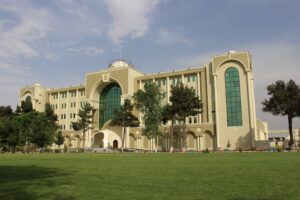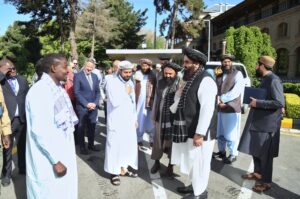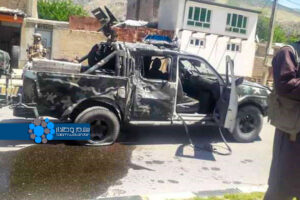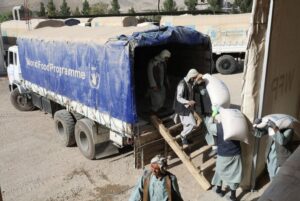KABUL (SW) – Findings by Salam Watandar indicate only one shelter home is active for thousands of vulnerable and lonely women in the entire country.
According to the findings of Salam Watandar, which are obtained through discussions with the former and current officials of safe houses or women’s support centers, out of 27 safe houses that were established during the republic period, only one safe house remains active and the rest have been closed.
Former officials of women’s support institutions and women’s rights activists say that they do not have accurate statistics and information about the fate of women who took refuge in safe houses due to violence. According to them, the reports they received show that some of these women have been reunited with their families and some have died as a result of the violence. They added that only a few women have joined the only active support center for women and there is no news about their fate.
The Afghan Women Empowerment Development Center was the first safe house in Afghanistan that is still active. Mari Akrami was the founder of this center in 2003, and Mahboba Siraj is the current head of this center. She said that the number of safe houses in the country reached 27 during the republic, but now only one center (Afghan Women’s Empowerment Development Center) remains active.
Mari Akrami, the executive director of the Afghan Women’s Network in the previous regime and the founder of this center, said that with the collapse of the republic, the officials of women’s support centers or safe houses and the women who were kept in these centers, all fled because of the fear of the caretaker government of the Islamic Emirate. She said: “At first, all the shelters were closed, even the ones that were left open and everyone came out because they all ran away. The only office that remained a safe house is the this one. The good thing about the conversation was that Mrs. Mahboba Siraj survived.”
Mahbuba Siraj, a women’s rights activist who is currently in charge of the safe house in Kabul, said that 59 women are supported in this center. She said the caretaker government supports their safe house and their work has not faced any obstacles. Mrs. Siraj added: “In the old days, women applied through the Human Rights Commission and the Ministry of Women’s Affairs for support, but for now, they are introduced to us through directly. As before, we take care of women.
However, Zabihullah Mujahid, the spokesperson of the caretaker government, rejecting the statements of Mahbuba Siraj, told Salam Watandar that there is no place left for such safe houses to operate within the framework of the current government. He added: “I must say that after the establishment of the Islamic Emirate of Afghanistan, we did not and do not have any place called safe houses in our laws. Now we don’t have any safe house in Kabul or entire Afghanistan.”
Mr. Mujahid considered the activity of safe houses in the previous regime as a way to break up families and said that after the collapse of the republic, all safe houses were closed.
He emphasized: “The concern was that the women would leave the house and the family after a very ordinary argument and a very normal resentment.”
On the other hand, a reliable source from the Ministry of Women’s Affairs of the former regime and the founder of the only active safe house in the country, rejects Zabihullah Mujahid’s statements and says that a safe house is still active.
Mari Akrami, the founder of the first safe house, whose institution is still active, said that the caretaker government was opposed to their activities at the beginning, but after examining this institution and understanding women’s need for it, it has supported this institution. Mrs. Akrami added: “They also realized later, they saw and came to see the safe house. Even for two or three weeks, the alley that belonged to the safe house was surrounded. They saw that there was no chatter here. Girls and women really have no one to go to. Those who had relatives accepted their cases and left, but the majority of the girls who were orphans, the majority of those who had no one, they stayed.”
However, it is not clear what happened to the women who took refuge there after the closure of the safe houses.
Former officials of women’s support institutions and women’s rights activists say that the reports they have received show that some of these women have rejoined their families, and some have died as a result of violence, and some have been imprisoned.
Mahbuba Siraj, said: “Through the Taliban, the safe houses that were closed, a number of women went and joined their families again. Some of them were transferred to prison for a period of time. I do not know the fate of all of them at the moment. A number of women came back to us.”
Shahrazad Akbar, former head of the Afghanistan Independent Human Rights Commission, said she does not have accurate information about number in this regard. “Now, for women who are victims of violence, unfortunately for most of them the only option is to live with violence or end their lives. Unfortunately, it has become such a difficult situation that we constantly read the news of women’s suicide.”
On the other hand, Zakia Rezaei, the former head of women’s affairs in Daikundi and Bamyan provinces, about the fate of the safe houses, said that a number of women living in the safe houses were arrested and another number were transferred to the only safe house in Kabul. She added: “We witnessed many arrests by the Taliban. Regarding the fate of women who were in safe houses before the change of the system, I must say that from some of the safe houses that I am aware of, efforts were made to hand them over to their families or to one of their relatives so that they would not suffer more. Finally, those who did not have any possibility to integrate into the society, they were transferred to Kabul safe house.”
Analysts believe such safe houses are crucial in a society where most of the people are illiterate and do not have the necessary knowledge and women are more exposed to violence hence there is a need to protect them.
ENDS






